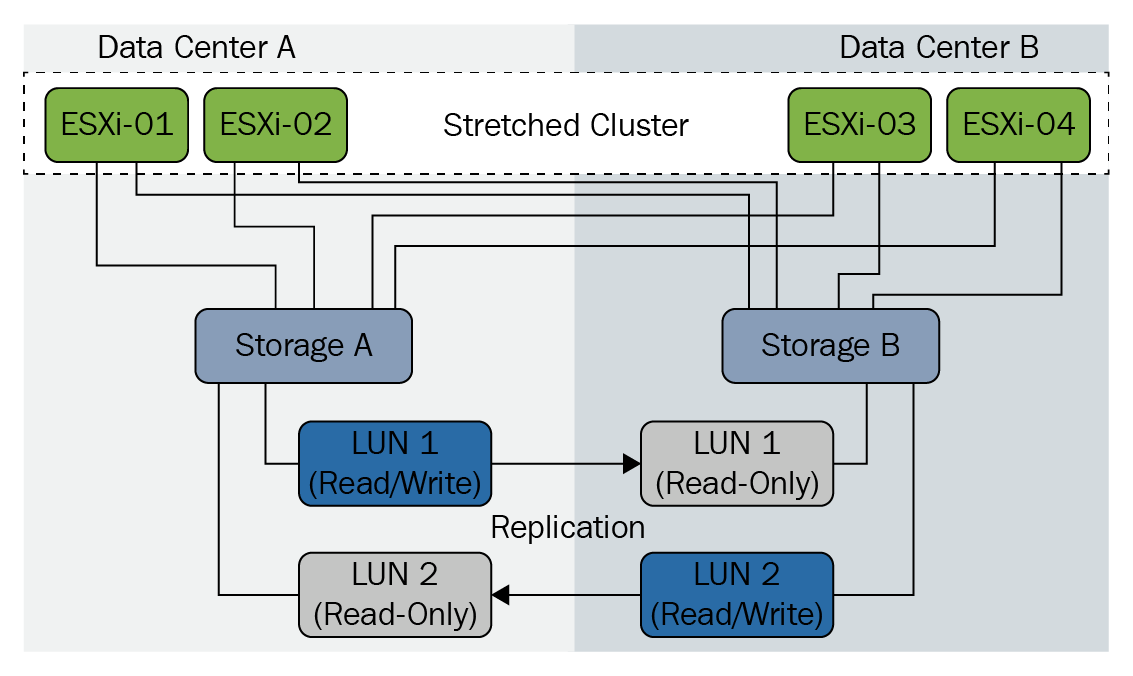A stretched cluster, sometimes called a metro cluster or metro storage cluster, is a deployment model in which two or more host servers are part of the same logical cluster but are located in separate geographical locations, usually two sites. In a stretched cluster, the two groups of servers (in each site) are usually used to provide HA and load balancing features and capabilities:

This allows proactive behavior in order to avoid or minimize service outages, using disaster avoidance; if a disaster affects an entire site, the second one will manage all the resources and services. Although a stretched cluster can be used for disaster recovery and not only for disaster avoidance, there are some possible limitations on using a stretched cluster as DR as well:
- A stretched cluster can't protect you from site link failures and can be affected by the split-brain scenario.
- A stretched cluster usually works with synchronous replication; that means a limited distance, but also makes it difficult to provide multiple restore points with different timings.
- Bandwidth requirements are high, to minimize storage latency. So you not only need reliable lines, but also enough capacity.
- A stretched cluster can be more costly than a DR solution, but of course, can also provide disaster avoidance in some cases.
In most cases where a stretched cluster is used, there might be a third site acting as a traditional DR; in this way, a multi-level protection approach is used.
